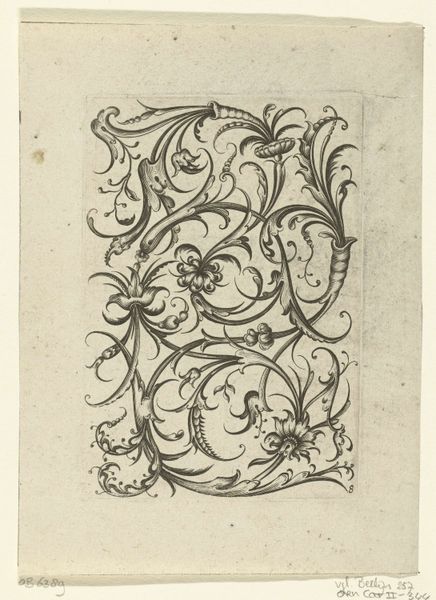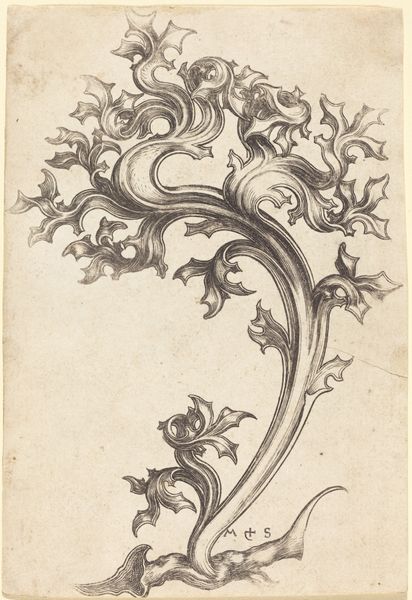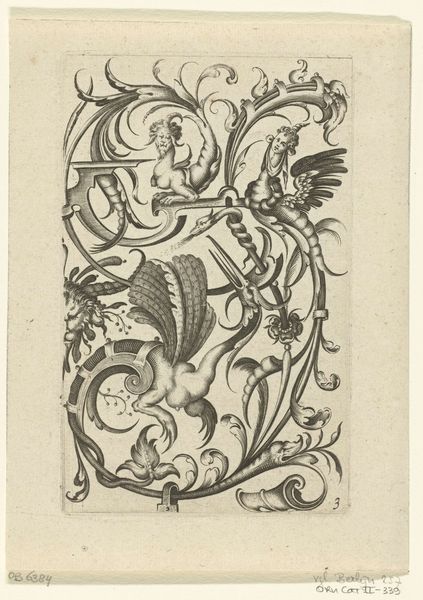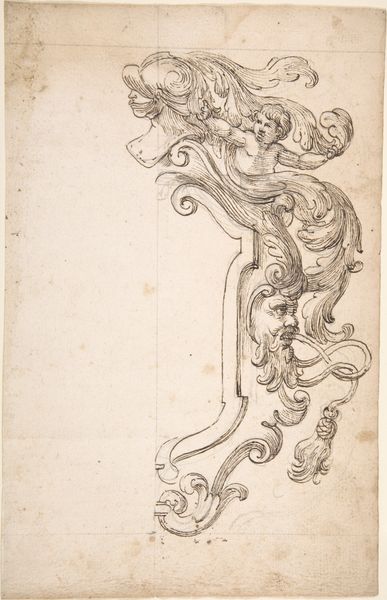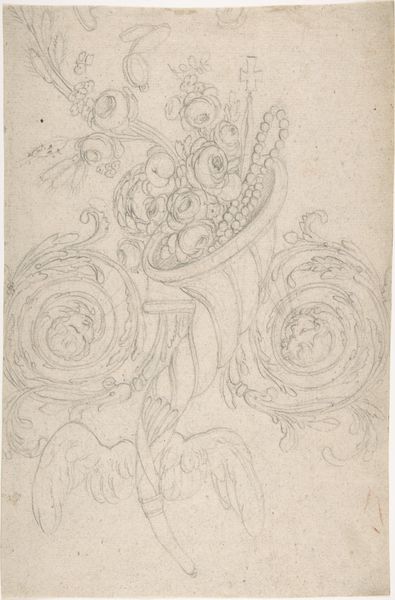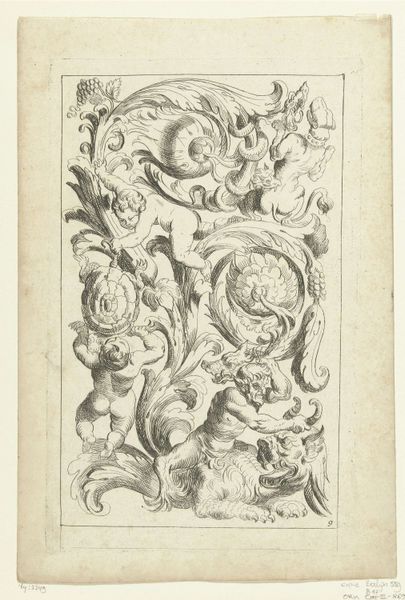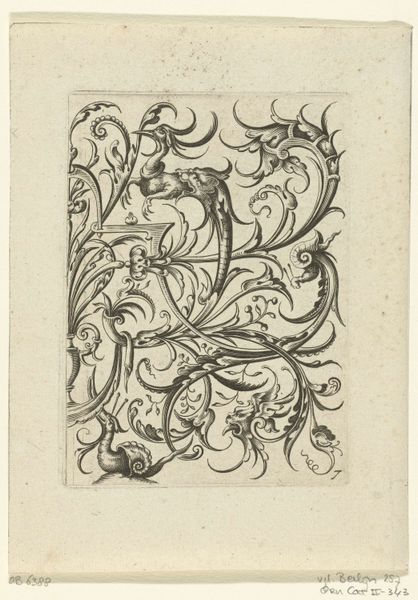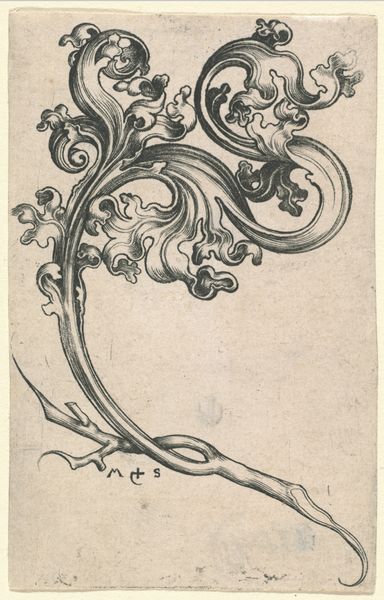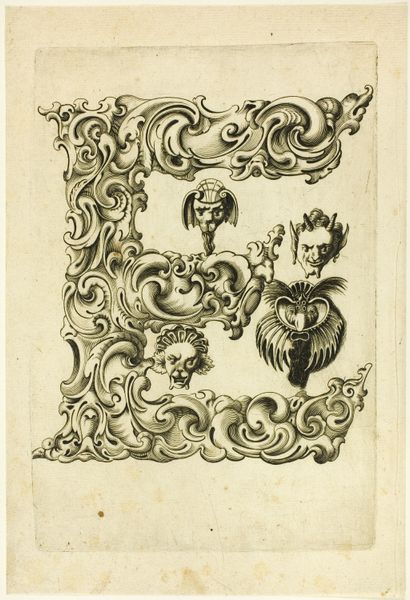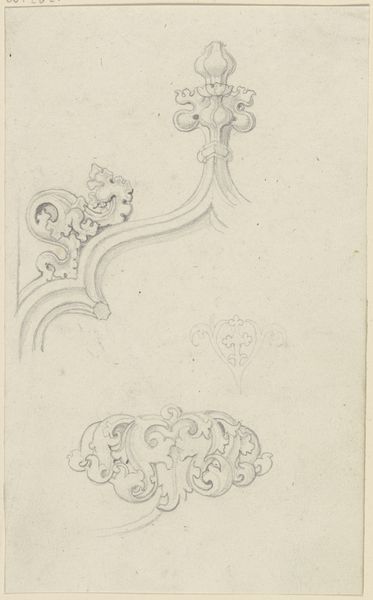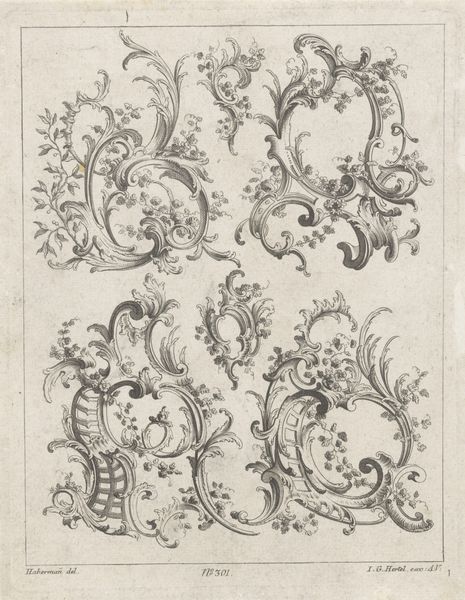
drawing, ornament, print, ink, engraving
#
portrait
#
drawing
#
ornament
#
medieval
#
pen drawing
# print
#
figuration
#
ink
#
line
#
history-painting
#
engraving
Dimensions: Sheet: 3 9/16 × 2 9/16 in. (9 × 6.5 cm)
Copyright: Public Domain
Editor: So, here we have Master ES’s “Ornament with a Wild Man” created between 1445 and 1467. It’s a detailed engraving in ink, currently residing at the Met. It looks quite fantastical and a bit unsettling at the same time, what strikes you about it? Curator: I find myself immediately drawn to the figure of the “wild man.” In medieval iconography, he's a complex symbol. Often, he embodies untamed nature, instinct, and the struggle between civilization and the wilderness. But also inherent to this figure is freedom. What objects do you notice this character carrying? Editor: It looks like he’s holding a club or a hammer over his head. Curator: Exactly! That weapon represents the wild man’s power, his ability to defend himself in the harsh wilderness, or to pose a threat to stability and order. The curling leaves almost seem to trap the wild man, creating a beautiful gilded cage. Editor: So, is the wild man a threatening figure? Curator: He's meant to evoke multiple responses. There's a fear of the uncontrolled, but also a respect for the raw power of nature, a nostalgia even. Look at how delicately Master ES rendered him – almost with sympathy. Does this complicate how we read this ornament, perhaps? Editor: It does. The detail softens the figure and almost humanizes him. I wouldn’t have thought about it in this way, so this has given me a completely fresh perspective. Curator: Visual symbols evolve. Over time, they acquire layers of meaning. Exploring these layers gives us insight into a culture’s deepest anxieties and aspirations.
Comments
No comments
Be the first to comment and join the conversation on the ultimate creative platform.
